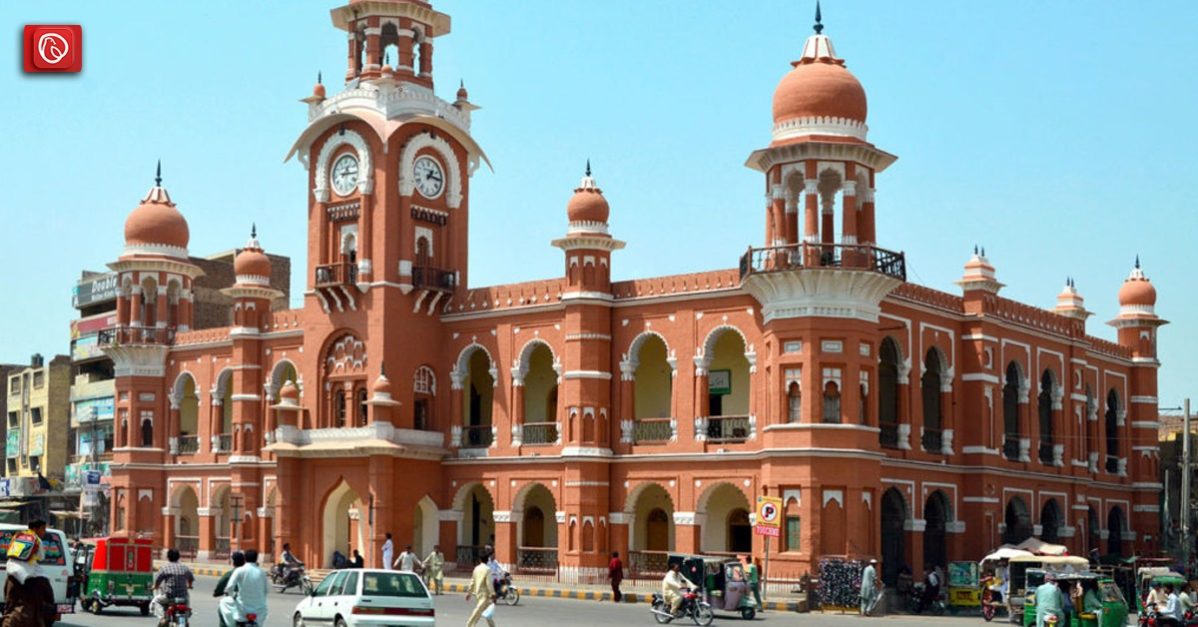Ghanta Ghar, also known as the Clock Tower, is a prominent landmark and symbol of Multan, a historic city in Punjab, Pakistan.
Graana.com provides a comprehensive guide Ghanta Ghar Multan, exploring its history, cultural importance, architectural features, associated legends, and more.
Historical Significance of Ghanta Ghar Multan
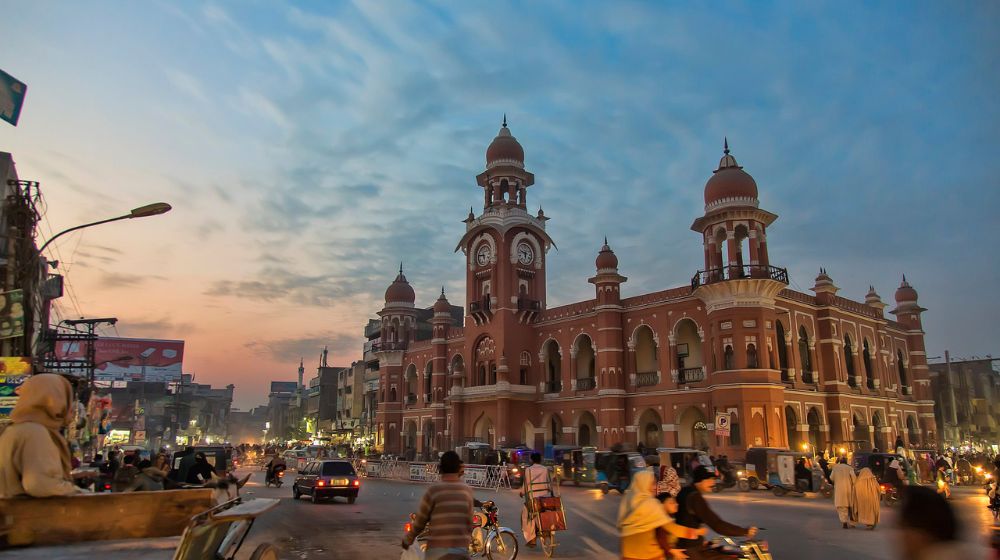
It was constructed in 1884 during the British Raj in the Indian subcontinent. Following the implementation of the municipal act in 1883, the British administration required offices to govern the city. Construction of the Ghanta Ghar began on February 12, 1884, and it took four years to complete.
The tower stands on the site where the Haveli of Ahmad Khan Sadozai once stood, which the siege of Multan destroyed. Initially, the main building and hall were named ‘Ripon Hall’ and ‘Ripon Building’, respectively, in honour of Lord Ripon, the Viceroy of India at that time. The clock tower itself was named the ‘Northbrook Tower’ after Lord Northbrook, a former Viceroy of India (1872–3).
The completion and inauguration of the building took place in 1888, establishing it as the new location for government offices. After Pakistan gained independence in 1947, the hall underwent a renaming, becoming ‘Jinnah Hall’ and has since served as a venue for official meetings, cultural events, and public access.
However, as time passed, the building became insufficient to accommodate the growing needs of offices, and the small hall became inadequate for meetings. Consequently, the offices were relocated elsewhere. Currently, there are plans to transform this historically significant building into a museum in the future.
Architectural Features of Ghanta Ghar
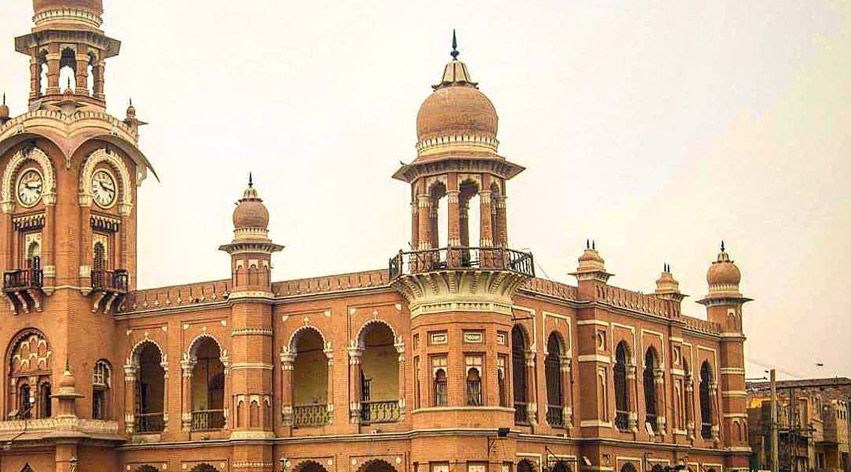
The tower boasts an impressive architectural design that combines elements of Mughal and colonial architecture. Moreover, Its structure is crafted with intricate craftsmanship, featuring elaborate carvings, arches, and balconies. Its sturdy construction has allowed it to withstand the test of time.
Clock Tower
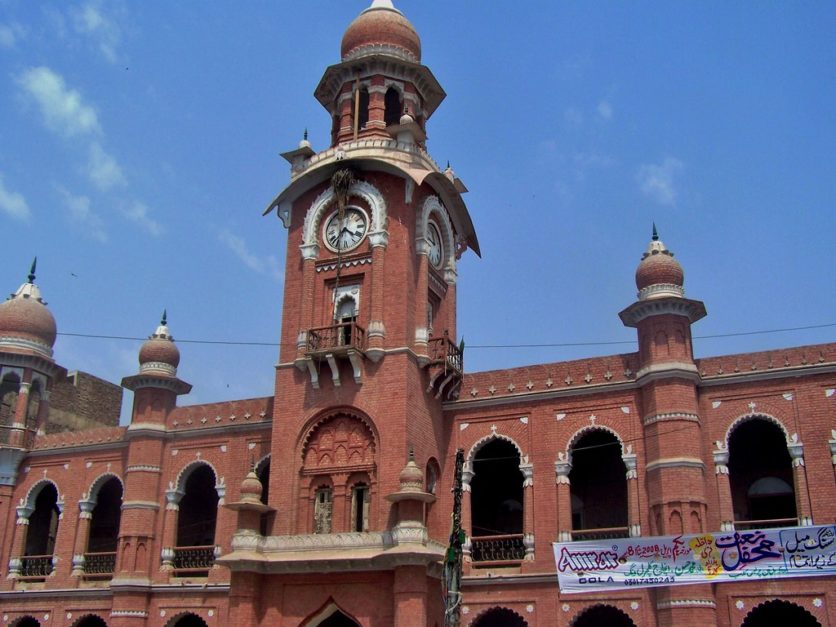
At the top of Ghanta Ghar stands a magnificent clock, serving as the centrepiece of the tower. The clock mechanism, meticulously maintained over the years, still accurately tells the time and chimes at regular intervals. The rhythmic sound of the clock’s chimes adds to the charm and allure of this landmark.
Bells and Chimes
The tower is adorned with bells, the chimes of which resonate through the surrounding area. The harmonious blend of the clock’s ticking and the bells’ reverberations have become a part of Multan’s soundscape.
Cultural Importance of Ghanta Ghar
It has become an iconic symbol of the city’s heritage and identity. Locals take pride in the clock tower, considering it a reflection of their history and a reminder of the history of Multan and its rich cultural legacy.
Festivals and Events
The tower becomes a focal point for celebrations and is adorned with colourful lights and decorations. Festivities such as Basant, Eid, and Independence Day attract large crowds to the place, creating a festive atmosphere.
Key Places Nearby
The following are some of the most prominent bazaars near the area:
Multan Bazaar
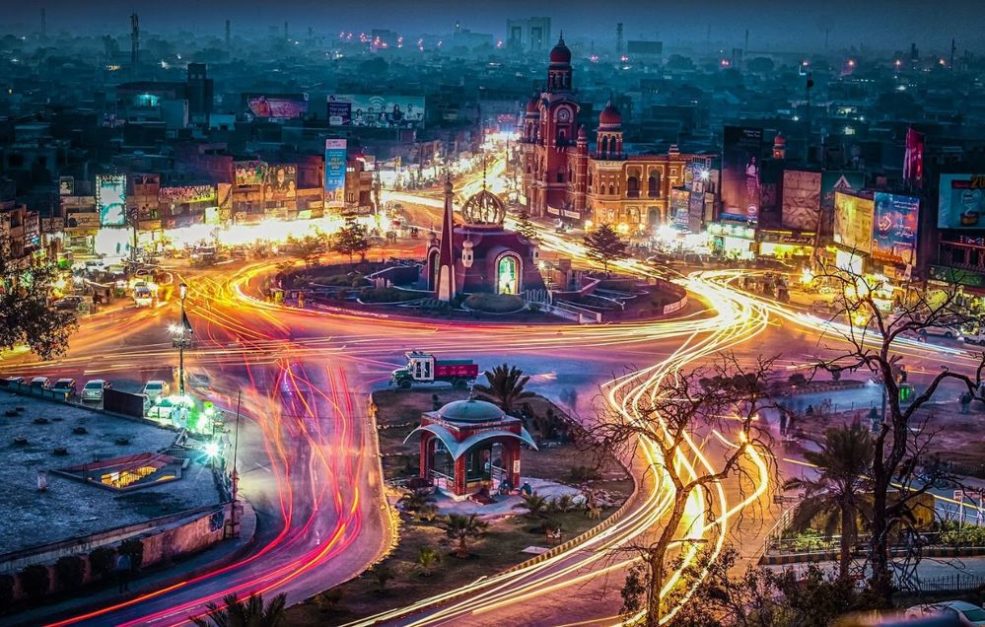
The bazaar offers a number of shopping options, where visitors can explore traditional handicrafts, textiles, jewellery, and spices.
Hussain Agahi
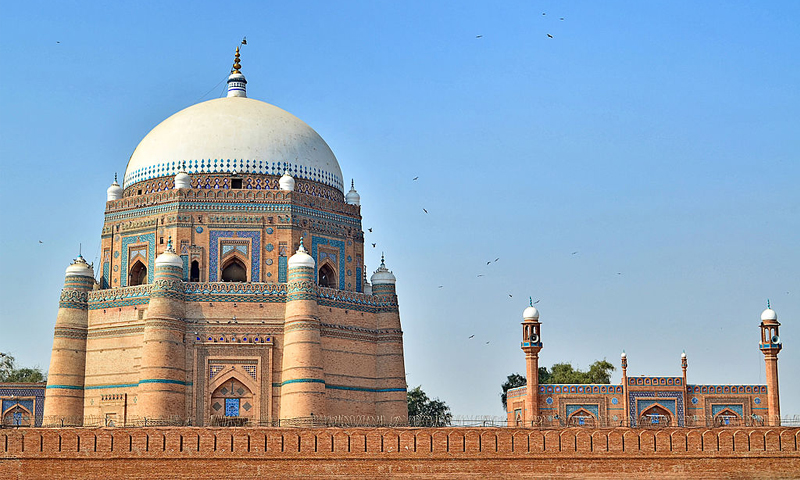
Hussain Agahi is a bustling commercial area known for its variety of markets and stalls. It is a popular destination for shopping and dining.
Chowk Bazaar
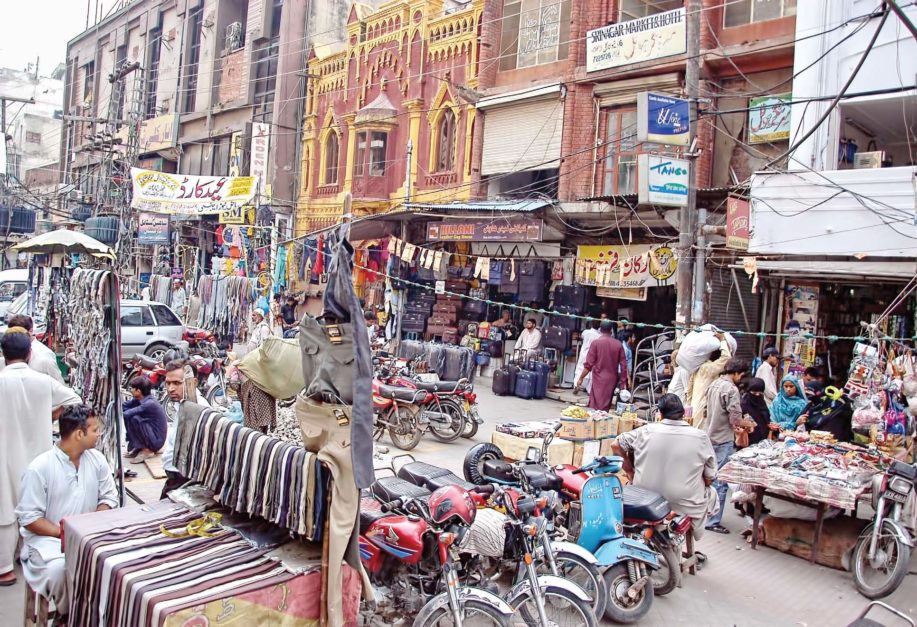
Chowk Bazaar is a lively market area where shops and vendors sell a wide range of products, including clothing, accessories, electronics, and household items.
Lohari Gate
Lohari Gate is one of the historical gates of Multan and offers a glimpse into the city’s rich history and architectural heritage.
Bohar Gate
The distinct architecture of Bohar Gate has earned its recognition, and narrow lanes lined with shops selling handicrafts, traditional goods, and local delicacies surround it.
Katchery Bazaar
Also situated nearby is the Katchery Bazaar, a popular market known for its wholesale and retail shops. These offer a wide range of goods, including textiles, stationery, and household items.
Shah Rukn-e-Alam Colony
This neighbourhood name is after the renowned Sufi saint, Hazrat Shah Rukn-e-Alam. It features a blend of residential properties, parks, and educational institutions.
Local Cuisine
The area surrounding Ghanta Ghar is renowned for its delectable local cuisine and street food items. Visitors can savour mouth-watering delicacies such as “Sohbat”, “Mutton Pulao”, and “Multani Sweets”.
Historical Conservation
Over the years, authorities and organizations have actively made efforts to preserve and restore the historical integrity of the clock tower. Conservation projects have aimed to maintain the tower’s original structure and architectural beauty while ensuring its longevity for future generations to appreciate.
Furthermore, the increasing recognition of its historical and cultural value has led to the implementation of plans for its conservation and promotion.
Future Prospects and Development Plans
Its potential as a tourist attraction has gained recognition, leading to plans for further development. Efforts are underway to promote tourism in Multan and showcase the city’s cultural heritage.
Infrastructure Improvements
To accommodate the increasing number of visitors, the authority is making infrastructure improvements. These include enhancing accessibility, expanding parking facilities, and providing additional facilities.
Conclusion
Ghanta Ghar Multan stands as a timeless monument, bridging the gap between Multan’s rich history and its vibrant present. Its architectural grandeur, cultural significance, and enchanting stories make it a must-visit destination for locals and tourists alike.
FAQs
What is Ghanta Ghar?
Also known as the Clock Tower, it is a historical landmark located in Multan, Pakistan.
What is the significance of Ghanta Ghar?
Built during the British colonial era, the clock tower holds historical importance as it served as the administrative hub for the city and has become an iconic structure representing the cultural heritage of Multan over the years.
Can visitors access Ghanta Ghar?
Yes, it is open to the public. Visitors can explore the exterior of the building and appreciate its architectural beauty.
Are there any attractions or activities near Ghanta Ghar?
Yes, there are several attractions and activities nearby. Visitors can explore the nearby markets such as Hussain Agahi and Chowk Bazaar, which offer a variety of shopping and dining options. Additionally, the historical gates of Lohari Gate and Bohar Gate are in close proximity, providing insights into Multan’s heritage.
Is there a plan to convert Ghanta Ghar into a museum?
Yes, there have been discussions and plans to convert it into a museum in the future. This would preserve the historical significance of the building, and provide a space for displaying artefacts and exhibits related to Multan’s history and culture.
Is there an entry fee to visit Ghanta Ghar?
No, currently, there is no entry fee. It is open to the public, allowing everyone to appreciate its historical significance and architectural beauty.
Follow Graana.com for more information.
